Cynthia Varady's Blog, page 4
July 24, 2023
Ferry Findings by Sue McDonough-Watchman | Review
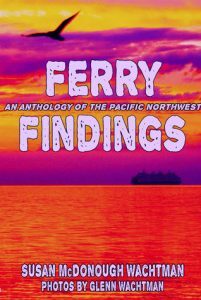
Ferry Findings is the second book of Susan McDonough-Watchman’s I’ve had the pleasure of reading. (The first is Lizzy in the Land Beyond. If you enjoy sci-fi with a twist, do yourself a favor and check it out.) This collection of short stories starts out strong and stays the distance, visiting themes of family, aging, loneliness, regret, and love. As always, with any of Susan’s stories, her female characters are strong and well-written. Not that her male characters are lacking. Quite the contrary. I find it noteworthy when an author takes the time to develop remarkable women in their writings. It’s refreshing to see and something we need more of in literature.
I first ran across Susan on Wattpad when she approached me during a contest we’d both entered (on second thought, I guess she ran across me). We got to chatting and reading each other’s work and blogs and started up an online friendship. You can imagine my glee at having a seasoned writer approach me, especially while still donning my writing water wings.
Ferry Findings is peppered throughout with beautiful images captured by Susan’s husband, Glenn Watchman. These images add to Susan’s narratives, providing a literal picture of the Pacific Northwest in all its watery glory.
Of the seven stories, my favorite, by far, is “Crabby Converse”. Here we find Beverly, a firecracker of an old woman whose prime is behind her. Beverly is a widow, and while her daughter and grandson visit often, she longs for the days she could do more on her own. Throwing caution to the wind, along with sound advice, she ventures off to take a walk on the pier alone, only to run into trouble.
The themes of growing older and fear of change are ideas most of us can relate to, and that’s what makes “Crabby Converse” such a wonderful story. I may not be in my 80s, but I can relate to the situation Beverly finds herself in. Susan made me experience genuine fear as a worried Beverly may not make it home safely.
The second story and namesake of the collection examine what’s truly important in life. Carla and her mother are taking the ferry to the mainland so Carla’s mother can attend college classes. While in class, Carla attends daycare. At only four, Carla understands why the classes are important to her mother, but she can’t shake the desire to spend more time with her mom.
“Carson the Heron”, and “Seal Story” are the third and fourth installments. Both revisit Beverly and her grandson, James, as they take walks along the water. These walks hold important life lessons for James. In “Carson the Heron”, he learns that waiting can become an opportunity. In “Seal Story”, James learns that sometimes who we are isn’t all that simple, and we may have to stand up to others who don’t agree.
“Huckleberry Horizon” transports the reader into the mind of a young mom who longs for the freedom of childhood and the energy and vitality she had back then. She wishes she had paid more attention to everything back then, only to realize that in her nostalgia, she is missing what’s important now; her toddling son.
In “New Heading”, we met Ramona, a seventeen-year-old girl unhappy with her home life. She feels enormous pressure from her successful mother, and the distance between them grows wider by the day. She turns to her friends for advice, but no one seems to understand what she’s going through. If you have everything money can buy, who more do you need? Finally, some sound advice comes from an unlikely source.
Ferry Finding’s final story, “It’s Magic”, we see the life of a man driven by work. This was the one story I wasn’t sure about. The beginning had a cliché ring to it; man works too hard, misses out on his son’s life, and regrets it. But as with all of Susan’s stories, this one has a twist that leaves the reader satisfied.
Discussion questions follow each short, delving deeper into themes and characters. Overall, I thoroughly enjoyed this collection of heartfelt short stories, and I look forward to what Susan Watchman creates next.
Similar PostsReview | Deadly Crossroads by Daniel Bjork
Review | Lizzie in the Land Beyond by Susan McDonough-Watchman
Review | Feta and the Fat Bastard by Judy Volhart

Use Commas. Don’t Be A Psycho Mug
The post Ferry Findings by Sue McDonough-Watchman | Review appeared first on CYNTHIA VARADY.
July 10, 2023
I’m So Sorry: An Open Letter to Pro Wrestling
Dear Pro Wrestling,
I owe you a huge apology. For much of my life, I have disliked you. I used to scoff and scold people who admitted to enjoying you. “You know it’s fake?” I’d say with a spiteful roll of my eye, docking them IQ points for having owned up to indulging in such trash. That is until Wrestling Isn’t Wrestling by Max Landis entered my life.
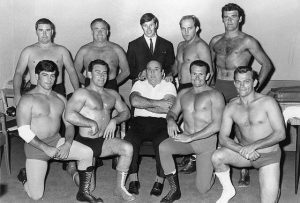 1969 10 03 CCLC Pro Wrestling by Gostalgia: local history from Gosford Library (CC BY-NC 2.0)
1969 10 03 CCLC Pro Wrestling by Gostalgia: local history from Gosford Library (CC BY-NC 2.0)It was another rainy spring afternoon in Vancouver. My husband and I sat on the couch. I pretended to write on my laptop when I had once again fallen down the rabbit hole that is social media. Matt sat watching something energetic. I had tuned it out for the last ten minutes, but as the intensity reached a rich lather, I could no longer ignore the passion spouting from the T.V.
“What in the world are you watching?” An edge in my voice.
“It’s a video on pro wrestling,” he answered, his eyes and attention never breaking contact with the flickering screen.
“Ugh, that stuff is so fake.” My irritable edge became full-blown vexation. Have you ever had that happen? Go from mildly put off to hateful in two seconds flat? Of course, you have. You’re pro wrestling. You’re all about shifting emotions.
“So are the detective shows you, love,” Matt spat back, a gleam in his eye, a smirk hanging from the corner of his mouth.
“Yeah, but that’s different,” I replied, thinking my tastes were superior to anything resembling the charade that is pro wrestling. He raised an eyebrow, stopping my snootiness in its tracks. He’d hit a nerve. Almost everything I followed on T.V. is fake. Why wouldn’t it be? T.V. is entertainment. It’s not an accurate representation of life. Television is inflated, dramatized, and spiffed up to appear larger than life. It has to be. If it were just like life, it would be too boring and depressing.
“All right, you’ve made your point .” I closed my laptop. “Do you mind starting it over?”
“Serious?”
“Yeah, it sounds interesting.” I settled in to watch. What I learned blew my mind.
 Triple H by Megan Elice Meadows (CC BY-SA 2.0)The Turning Point
Triple H by Megan Elice Meadows (CC BY-SA 2.0)The Turning PointLandis’ parody of the rise of Triple H (a.k.a. Hunter Hearst-Helmsley) to World Wrestling champion is fantastic. The gender-swapped reenactment gives the viewer an amazing and playful ride through the trials and tribulations of Triple H’s on-screen career.
Wrestling Isn’t Wrestling ladled intrigued into my mind. Not only did I sit through a short film about pro wrestling, something I would have never done, but I also ended up watching it twice. . . in a row. Yes, it’s that good.
What can I say? I found you interesting to the point of mild obsession.
However, Landis’ Cliff Notes version only tells the public story of one of the greats in pro wrestling. I wanted to learn more. I wanted to know about the actual pro wrestlers, about the people behind the personas.
Enter Radiolab’s The Montreal Screwjob podcast, where Bret “The Hitman” Hart went up again Shawn Michaels for the championship title. But things didn’t go according to plan. Note: a screwjob is a finish to a match where the promoter and one wrestler scheme to have the other wrestler lose without the other wrestler’s foreknowledge. As you can imagine, this is a really shitty thing to do.
Where Landis’ bio on Triple-H piqued my interest with what happens in front of the camera, The Montreal Screwjob was a gut punch as to what goes on behind the scenes. This is where shit gets real. I always complained about how fake wrestling is, but a lot of real-life bleeds over into the ring. This blurring of the lines between reality and fiction makes for some tough working conditions but great television.
The ScrewjobHere’s the skinny for those unfamiliar with the Montreal Screw Job. Bret Hart, a longtime babyface in WWE and right-hand man of Vince McMahon, the WWE principal owner, jumped networks and go to WCW for better pay.
As stated in Hart’s contract, he had reasonable creative license over the outcome of his final match. Over the weeks, McMahon and Hart found some middle ground; Hart’s final match against Michaels would end in a schmozz (a cluster fuck of wrestlers rushing the ring, making a clear winner impossible to call). This outcome would allow Hart, the championship belt holder, and Canadian National Treasure, to save face while on his native soil. Hart would return the belt the following day before moving over to WCW, or so he thought.
 Bret Hart by Simon (CC BY-NC-ND 2.0)
Bret Hart by Simon (CC BY-NC-ND 2.0)Here’s where it gets shifty. McMahon couldn’t risk having his belt appear on WCW, so he came up with his own ending to the Montreal match. After agreeing to Hart’s demands, McMahon secretly told Shawn Michaels that Hart would lose, making Michaels the victor. Michaels agreed to keep Hart in the dark, laying the blame for the screwjob with McMahon.
During the match, things started out as planned. Michaels puts Hart in a hold like discussed, and then someone, perhaps McMahon, says, “Ring the bell”, officially ending the match. Since Michaels had Hart pinned when the bell rang, Michaels became the champion.
It’s rare for pro wrestlers to break kayfabe (the third wall of wrestling) while in the ring, but this was one of them. The expression of shock and betrayal on Hart’s face is unmistakable. He’s not acting. Hart spat in McMahon’s face (a man he considered a second father), destroy WWE property by smashing the announcer’s table and audio equipment, and then later, he punches McMahon in the face, knocking him unconscious.
Many pro wrestling fans and critics believe what happened in Montreal was scripted and nothing more than a publicity stunt. Yet, Michaels and Triple H come clean about the Montreal Screwjob in the documentary WWE: The Shawn Michaels Story: Heartbreak & Triumph. But even their admission of knowing the actual outcome of the match could be considered keeping kayfabe.

Never Underestimate A Well-read Woman Mug
Pro Wrestling Gets Real
 Team Xtreme by Nate Miller (CC BY-NC 2.0) Team Xtreme consisted of Jeff Hardy, Matt Hardy, and Lita (2002).
Team Xtreme by Nate Miller (CC BY-NC 2.0) Team Xtreme consisted of Jeff Hardy, Matt Hardy, and Lita (2002).Stories like this are not unique. Take the love triangle that took place between Matt Hardy, Edge (Adam Copeland), and Lita (Amy Dumas).
After a bad fall that left Matt with a torn ACL requiring surgery and leaving him home to recuperate for months, Dumas struck up a romantic relationship with Copeland.
The affair went on for several months before Hardy found out, leaving him heartbroken. Understandably so. Later in an interview, Hardy broke kayfabe and spoke out about the breakup, which led to WWE firing him. Eventually, they took him back and wrote the breakup into the show, pitting Edge and Hardy against each other in the ring.
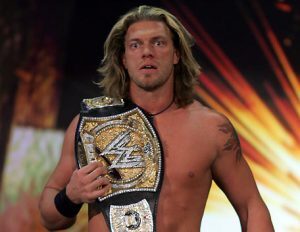 Edge Champion by Stormyxxx (CC BY-SA 2.0) Edge is seen with the WWE Championship after a failed “Live Sex” celebration with Lita (Amy Dumas) on the January 9, 2006 edition of RAW.
Edge Champion by Stormyxxx (CC BY-SA 2.0) Edge is seen with the WWE Championship after a failed “Live Sex” celebration with Lita (Amy Dumas) on the January 9, 2006 edition of RAW.I have a hard time wrapping my head around how awkward and hard that was for everyone involved. Imagine being placed in a situation where you need to pretend to beat the ever-loving shit out of someone night after night when all you want to do is beat the ever-loving shit out of them for real. Talk about a hard-working environment. Yet, they pulled it off. Absolute professionals to the bone. Shirts off to you, sirs. Shirts off.
So, Pro Wrestling, I’m sorry for being such a prick to you. I was wrong, and I’m not too big to admit it. You are fascinating. Your wrestlers are tremendous athletes who risk their lives to bring their fans amazing shows. I would even call you theater. After all, there’s over the top dramatics, costumes, characters, and an audience. I may never froth at the mouth or scream at the top of my lungs for you, but you have my undying respect.
Further Reading/WatchingMontreal Screw Job – This is Wrestling!
Grantland Dictionary: Pro Wrestling Edition
Slam! Wrestling – Matt Hardy Pulls No Punches on Between the Ropes by Steve Rennie
Former WWE Star Describes Bret Hart – Vince McMahon Backstage Fight After The Montreal Screwjob
Why You Should Love Wrestling Podcast
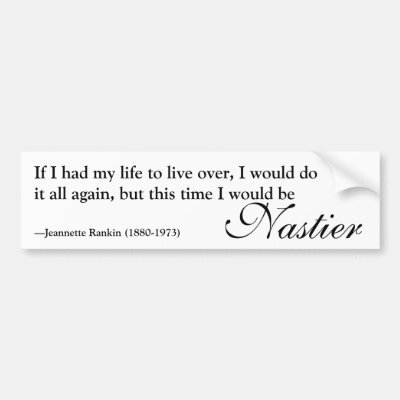
Jeannette Rankin Nasty Woman Quote Bumper Sticker
The post I’m So Sorry: An Open Letter to Pro Wrestling appeared first on CYNTHIA VARADY.
June 26, 2023
Meena by Sine van Mol | Banned Book Project
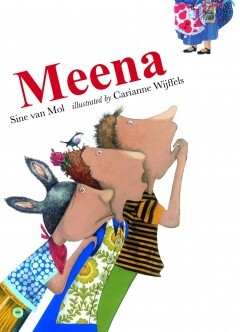 Meena Synopsis:
Meena Synopsis:The children of Fly Street fear and taunt their neighbor Meena, thinking she is a witch, but when they meet her granddaughter and taste her cherry pie, they learn the truth.
Reasons for Challenge:In the fall of 2021, Campbell County Public Library received 55 complaints challenging 29 titles. The challenge was led by members of MassResistance (formally Parents’ Rights Coalition and the Article 8 Alliance), who sought to have criminal charges brought against the library staff for making the titles available to the public.
An exact reason for Meena being challenged is not available.
Locations Banned/Challenged:Meena was challenged at Campbell County Public Library, Gillette, Wyoming. Copy retained in collection.
References:“Children’s Literature: Picture Books.” NWCCD Libraries; Kooi Library (Sheridan) & Daly Memorial Library (Gillette). Retrieved on February 10, 2023, from https://libguides.sheridan.edu/c.php?g=416679&p=2943993
“Censorship Dateline.” Journal of Intellectual Freedom and Privacy, vol. 6, no. 4 (Winter 2021). Retrieved on February 10, 2023, from https://journals.ala.org/index.php/jifp/article/viewFile/7834/10923
Morgan, RJ (2021). CCPL relocates two books challenged for reconsideration. County 17. Retrieved on February 10, 2023, from https://county17.com/2021/12/30/ccpl-relocates-two-books-challenged-for-reconsideration/
Reconsideration of Library Materials. Campbell County Public Library System (CCPLS). Collection Development Policy Section III-10. Retrieved February 10, 2023, from https://www.campbellcountywy.gov/DocumentCenter/View/19362/Reconsideration-of-Library-Materials

I Read Banned Books Mug
The post Meena by Sine van Mol | Banned Book Project appeared first on CYNTHIA VARADY.
June 12, 2023
Review | In the Weeds by Mark Ozeroff
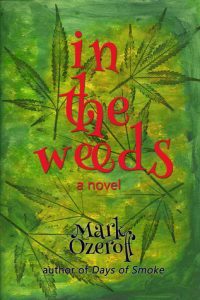 In the Weeds is Mark Ozeroff’s second war-time novel. Follow the link to learn more about the first.
In the Weeds is Mark Ozeroff’s second war-time novel. Follow the link to learn more about the first.In the Weeds gives a personal look at what combat PTSD can do to a person. How the trauma of war changes an individual into a powder keg, and how the transition from combat to civilian life can be tricky, if not impossible. No matter where vets go after their time in battle, they carry the weight of personal loss, personal damage, and nightmares of what transpired while in the weeds.
In the Weeds follows Air Force pilot Menachem “Slats” Jakov Kisov, who, upon watching a crop duster dump its load on a field of corn at the age of four, knew he wanted to fly. Seizing the opportunity to make his dream a reality, he enlists in the Air Force and demands they put him in the cockpit. Being short of able bodies, the Air Force acquiesces his request, and Slats becomes a forward air control (FAC) pilot, marking enemy combatants on the ground with phosphorous before calling in the big guns.
While the novel’s stint in Vietnam is short, we are introduced to two lingering characters who make lasting impressions on Slats. The first is R&R, a wry-humored black pilot who knows his way around a guitar and who has a penchant for smoking the reefer. It’s here that Slats turns his cheek on drowning his sorrows in liquor for the tranquilizing lure of sensimilla. The second pivotal character is Meat, the biggest guy in the platoon. Meat’s time in the book is short. Not everyone survives war, and Slats takes Meat’s death hard, tacking his devil-may-care outlook into the red as a result. He starts to take more chances during his missions, ultimately getting shot down and injured.
Slats’s easygoing disposition makes it appear that adjusting to life outside of war is a breeze. He strides back into his hometown of Farth, Florida, and slides right back into flying without missing a beat. Slats finds friendship and assistance from aging vets from WWII who get him back into the air, the only real place he feels free. Ozeroff makes nods to how civilian life can be uncomfortable and, at times, downright painful for vets suffering from PTSD, but most of this information comes in the form of subtext. Slats rents a barn from Jelly, a kindhearted older black woman, and prefers to sleep with his plane out in the dust than in a real house. His temper flares at the slightest hint of injustice, and his mouth gets him into some deep trouble with the local law enforcement. Seeking the adrenaline rush of war, Slats takes a high-paying job smuggling weed into Florida from a small isolated island in the Caribbean. However, any mental pain Slats may feel is downplayed and deflected by witty banter.
The flying aspect of the novel is rife with technical jargon, and my heart began to sink during the first chapter as I muddled through. However, like a dutiful big brother, Ozeroff took my hand and led me through the tough stuff, and before I knew it, the jargon melted into the background and didn’t bother me again. I’m still not completely sure what “trimming” means or what in the world pulling numerous notches of flaps does to an airplane. I even looked it up, and I’m still not sure. I’m also not worried about it.
The presentation of this novel is one of absurdity, following the trail cut by Joseph Heller’s Catch-22. Much like Catch-22, shit gets real towards the end, and we realize that war is insane, those involved in declaring it is insane, those who are thrust into it go insane, and underneath it all is nothing but destruction and grief.
Slats learn the hard way that dangerous people are everywhere, and poking deranged individuals may lead them down a path of no return. There were moments in In the Weeds that took my breath away. The twists and turns of the characters’ motivations were, at times, without logic and beyond my comprehension. Then I’d turn on the evening news and be hit with similar stories of insanity. In the Weeds gave the feels more than once, and I found myself reaching for the tissues so often I lost count.
Slats may seem cool, but the reality is that he’s just as broken as any other vet suffering from PTSD. The difference between him and his fellow soldiers is that he’s found peace while flying. Even if that means carting a literal ton of weed over the Atlantic. Hey, man, you do you.
At the end of the day, In the Weeds is a fantastic piece of historical fiction. Ozeroff’s characters are honest, flawed, and 100 percent real. His dialogue, while a little unrealistic at times, remained true to the characters and their motivations. Overall, In the Weeds was a joy to read.
More ReviewsReview | A Conversation with A Cat by Stephen Spotte
Review | Rex Libris: I, Librarian by James Turner
Review | Lizzie in the Land Beyond by Susan McDonough-Watchman
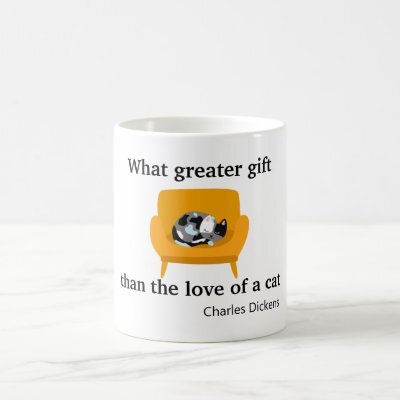
What Greater Gift Than the Love of a Cat Coffee Mu
The post Review | In the Weeds by Mark Ozeroff appeared first on CYNTHIA VARADY.
May 15, 2023
Review | A Conversation with A Cat by Stephen Spotte
There was a writing prompt I ran into years ago that asked the writer to tell a story from the point of view of an inanimate object. Tom Robbins’ Skinny Legs and All popped into my mind. In that book, a few of the main characters consist of a sock, a spoon, and a can of beans. Each object has a unique voice and backstory. The personification of objects and animals isn’t something new. Humans have been attributing human qualities to non-human critters and things since storytelling became a fireside pass time. There is something special about an author giving the reader a peek into the minds, real or imagined, of non-human characters. Stephen Spotte’s A Conversation with a Cat delivers that special something in spades.
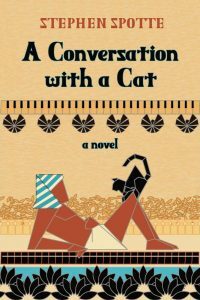 A Conversation with a Cat Review
A Conversation with a Cat ReviewAfter emergency surgery for a ruptured gallbladder, Steve finds himself inebriated on pain meds. Wanting to keep the buzz going, Steve starts in on the rum and weed (a lovely combination I personally researched in my 20s) when his ‘rescued’ ally cat, Jinx, makes mental contact.
Genre JumperIn the forward of the book, Spotte recounts his own impromptu gallbladder removal, subsequent morphine-addled mind, and the formation of the premise – what if cats could talk to humans in altered states of consciousness? The reader is also given to rundown on how Spotte’s actual cat Jinx came to live with him and his wife. The forward, along with the last two chapters and the middle bit about Cleopatra (I know, that’s the whole book), make me want to move this book from the fiction genre to the creative non-fiction category. There’s just too much truth and fact for A Conversation with a Cat to be pure fiction.
Jinx explains to Steve that cats share a collective consciousness of sorts. Cats with either historical ties or perhaps pure self-indulgence upload their memories to what I shall call the cat-cloud. The cloud can then be accessed by any living cat. Jinx decides to indulge his intoxicated owner with the tale of Cleopatra, as seen through the eyes of Annipe, one of the Queen of the Nile’s feline companions.
The Cleopatra I Didn’t KnowI must admit to not knowing much about Cleopatra outside of misconceptions and gossip surrounding this ancient powerful female leader. What I knew about her came from high school English class in the form of Shakespeare, asp, and all. However, Annipe’s history was different. Cleopatra wasn’t the femme fatal I had been led to believe she was. Sure, she was ruthless and cunning, but one had to be growing up in the family she found herself born. Not many made it out alive. I was so intrigued with Spotte’s, er, Annipe’s retelling that I had to do my own research on this amazing woman.
I found several podcasts to see if I could discover where history ended, and Spotte’s imagination began, and I have to say, the man did his homework.
Spotte used Stacy Schiff’s Cleopatra: A Life, along with Arthur Weigall’s The Life and Times of Cleopatra Queen of Egypt as key references. Schiff’s book was the one I heard referenced over and over in the history podcasts I delved into. When kismet threw Schiff’s book onto the library discard shelf I happened to be sifting through, I had to buy it. It was as if Annipe, the queen herself, and Spotte were speaking to me from the mysterious cat-cloud.
How to Personify a CatThrough the no-nonsense and cynical voice of Annipe, Spotte delivers a snarky and, at times bitchy rendition of the life of Cleopatra. As an on-again, off-again cat keeper, Annipe’s observations and critiques of human motivation and character flaws felt true and, at times, a little hurtful, but hey, what else can we expect from our feline frenemies?
Cats are interesting creatures. Their existence alongside humans is one of mutual benefit instead of the intense companionship humans experience with dogs (food brings rodents, cats eat rodents, humans like cats who eat rodents, cats like an easy meal). Cats hang out with humans because life is ultimately easier than having to live hand to paw. Dogs, on the other side of the coin, have been bred down to be our best friends.
In addition to Cleopatra, the reader is also treated to what Jinx’s life was like before the overly “helpful” humans yanked him off the street, swiped his balls, and stuck him in a cage.
Steven Spotte offers a unique and imaginative peak into the world of cats and the misunderstood Cleopatra in A Conversation with a Cat. I truly enjoyed this delightful book with one caveat. I wasn’t into the slut-shaming Annipe delved into on occasion concerning herself, other cats, and her mistress, Cleopatra. Yet, I’ll let it slide because a cat is gonna be catty. It’s in their nature.
Similar PostsReview | Rex Libris: I, Librarian
Lizzie in the Land Beyond by Susan McDonough-Watchman | Review
Deadly Crossroads by Daniel Bjork | Review
The post Review | A Conversation with A Cat by Stephen Spotte appeared first on CYNTHIA VARADY.
May 12, 2023
I Found The Great Controversy in my Mailbox
There’s an interesting phenomenon taking place in Portland, and at its center is a book penned in 1895 by E.G. White, a co-founder of the Seventh-day Adventist Church. So you can imagine my surprise when I gathered the mail and found a reprinting of The Great Controversy addressed to the ‘current resident.’ Shock doesn’t quite cover the feeling of receiving this unsolicited ‘gift.’
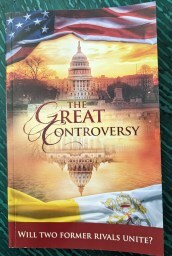
The Great Controversy is text-heavy with a clearly patriotic cover. The first of which can be off-putting, while the second is decidedly a red flag. Curious, I investigated and found no mention of the author on the cover, which is sus. It is most likely that the sender wanted to keep their cards close to their chest regarding the Seventh-day Adventist Church controversies. The tagline states: Will two former rivals unite? Makes one question whether they are about to embark on a novel filled with romance and sophisticated character arcs.
Too daunted by the wall-to-wall text to do more than thumb through this behemoth of bible quotes and philosophical ramblings, I took to the internet instead to learn more about the who and why behind this odd postal present.
Printed and distributed by Remant Publishing, a Christian publisher out of Coldwater, Michigan, whose founder, Dwight Hall, uses the company as a ministry, distributing religious-based books, including mass spamming campaigns across the U.S. Yes, that’s right. Portland isn’t the only city hit by Hall’s commitment to Christian conversion, just the most recent. His other victims include Detroit, Denver, New York, Chicago, San Francisco, Philadelphia, and Charlotte.
These campaigns aren’t just a few books shipped here and there. We’re talking hundreds of thousands of books. Portland postal workers snapped photos of pallets of The Great Controversy, each slapped with a label to ‘current resident.’ I imagine post workers across the city clapped with glee at having to process and deliver these two-pound books with the same enthusiasm had when the Sears catalog* came out each fall for the Christmas rush. Not to mention the total waste of paper. Most folks will either toss The Great Controversy into the trash or try to recycle it.
But what exactly is the great controversy White writes of in her magnum opus?
White claimed she wrote Controversy based on her visions and dreams, of which she had many. These ramblings would become the major themes of the Seventh-day Adventist Church. Yet, time and time again, White was brought up on charges of plagiarism, having stolen ideas and, in some instances, word-for-word passages from her contemporaries.
The Great Controversy details the cosmic war between Jesus and Lucifer, which is also recreated here on Earth. Much of this controversy stems from the Pope. Why? I have no idea and don’t really care. I’m sure most recipients share my apathy.
*For those of you too young to know, the Sears Catalog was a large, usually glossy paged magazine containing pictures of products with item descriptions one could order through the mail. Picture Amazon.com in print.
The post I Found The Great Controversy in my Mailbox appeared first on CYNTHIA VARADY.
May 1, 2023
Oh, The People You’ll Meet
A German exchange student who spoke little English
Soccer fan, butt man with his Bluetooth at the ready.
A cat-loving couple with a toddler who was almost as sad as I was to have to give up my cat.
The above are notes I made several years ago about strangers I met somewhere, but I have no idea where exactly.
From the last description, I have at least one contest clue to help me place it in time and space. Before moving back to California, we had to surrender our cat, which broke our hearts. We found a no-kill shelter, and she did get adopted, but that didn’t assuage our guilt of abandoning our furry family member.
The move that resulted in our giving up our cat happened from the end of 2015 to the beginning of 2016, so I can assume I ran across the toddler-toting, cat-loving couple in California, most likely at a park cuz that’s where parents with small kids hang out. However, as to the specifics, I got nothing.

As for the other two, not a clue. German exchange student? Nope, no memory of them.
A soccer fan, butt man with Bluetooth isn’t even a proper sentence. Who is the person, and how did I run across them?
Oh, the people you’ll meet is an understatement.
What’s the takeaway? I need to write better notes if I’m planning on writing about it later on, and maybe don’t wait eight-plus years to finish a thought.
This has been your public service announcement.
The post Oh, The People You’ll Meet appeared first on CYNTHIA VARADY.
April 17, 2023
10 Tips For Writing A Winning Author’s Bio
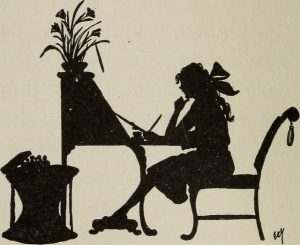 “Everyday manners for American boys and girls” 192210 Ways to Make Your Author’s Bio Sing
“Everyday manners for American boys and girls” 192210 Ways to Make Your Author’s Bio SingThere are literally hundreds of blogs and sites out there instructing aspiring authors on how to craft a well-received author’s bio, so the information here may not be new to you. Coming from a place of unemployment, where I spend a margin of my “spare time” (if there really is such a thing with an infant/toddler crawling/running around) writing cover letters and resumes hoping to land a job, I know firsthand how difficult it can be to talk about one’s self. In the US, confidence is at a premium these days. However, I didn’t grow up that way. An introvert by nature, boasting about myself not only makes me uncomfortable, but my mother also discouraged it throughout my youth, giving me a significant handicap compared to the next up-and-coming generation. I come from a long line of self-deprecating humorists, and I enjoy that type of deflection, as harmful as it can be to one’s self-esteem. However, I realize how important is it to be proud of one’s achievements. They may not be as grand as what others have wracked up, but they’re yours and worth closer examination.
So here we go, the top 10 things I’ve learned about writing an author’s bio:1. Leave the Demographics Until the EndDon’t begin with where you live, how many cats/dogs/fish/kids/hamsters you own, or your hobbies. Start out with the writing stuff (that’s what you’re promoting, not your love of animals), and leave the numbers until the end.
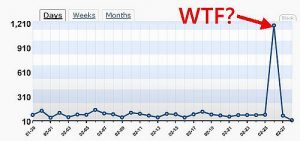 Crazy Stats by Beth via Flickr (CC BY-NC-ND 2.0)2. Write in the Third Person
Crazy Stats by Beth via Flickr (CC BY-NC-ND 2.0)2. Write in the Third PersonThis was something I wondered about, having just read an amazing short story followed by the author’s bio, which was in the first person. Now you know, so phrase your bio as if someone else is talking about you. Someone who thinks you’re amazing.
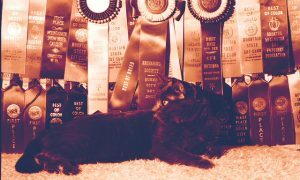 The Prize-Winning Cat by Starmanseries (CC BY 2.0)3. Highlight Your Writing Accomplishments
The Prize-Winning Cat by Starmanseries (CC BY 2.0)3. Highlight Your Writing Accomplishments Awards for writing and previous publications are the icing on your bio-layer cake and can be just what you need to stand apart from other authors.
What if you have no writing credits? Dorothy Thompson writes in her article, Writing An Author Bio That Will Knock The Editor’s Socks Off! since you are sending your writing to a publisher, you are a freelancer, and since you write, you are a writer. Now you can say, “So and so is a freelance poet/novelist/writer.” However, if you end up saying it, make it sound professional.
 Idea by Pimthida (CC BY-NC-ND 2.0)4. Take Ideas From Established Writers
Idea by Pimthida (CC BY-NC-ND 2.0)4. Take Ideas From Established WritersRead online bios, book jackets, and interviews for ideas on how to plan your bio, especially from writers in your genre. Pick out active words that jump off the page and put them to use in your bio. Look at how they wrote about past achievements and publications. Can you apply this technique to your bio? The good news is you don’t have to reinvent the wheel, so borrow a little to make your bio glow.
Example bios:
Stephen King
Doug Dorst
Betsy Tobin
John Green
 Shay n Lucy by Amanda Tipton (CC BY-NC-ND 2.0)5. “Alright, Mr. DeMille, I’m ready for my close-up.”
Shay n Lucy by Amanda Tipton (CC BY-NC-ND 2.0)5. “Alright, Mr. DeMille, I’m ready for my close-up.” What’s worse than writing about yourself? Having your photo taken. Find a professional or semi-professional photographer or friend with a knack for the art, and take a lot of pictures. I mean lots and lots of pictures. As someone who used to photograph weddings, the more photos you take, the better your odds are of capturing at least one perfect image. Find that image you like, and use the hell out of it. For some tips on how to stage your photo, check out Heather Hummel’s article.
6. Join Professional Writing GroupsThis is particularly important for writers with no publication credits to their names. As an active member of a writing or critique group, tells editors you are serious about honing your craft. For a genre writer, join a group relating to your writing style.
Writers Associations: Local And National Organizations For Writers
For Writers: Writing Groups
10 Best Organizations for Writers
Writing Groups, Associations & Organizations – Canada
 Diploma by Naomi Green (CC0 1.0)7. Link to Your Website
Diploma by Naomi Green (CC0 1.0)7. Link to Your WebsiteThis is a great way to let people know what you’re up to and get updates on new material publishing soon. If you don’t have a website, join a site like GoodReads or Facebook, create an author’s page, and put your bio there. This is also a fun way to interact with fans and let people know what you’ve been up to.
8. What to do with your degree(s)If you have earned an AA, BA, BS, MA, MS, Ph.D., or some other degree, only mention it if it pertains to the topic you’re writing on. For example, if you’re promoting your new children’s book, and have an MBA, make sure your story is related to business if you mention your degree. If your book isn’t about the littles account, save your MBA for later titles pertaining to finance. However, if you’re an elementary school teacher, mentioning that in your bio for your new children’s book is completely relevant.
 Outdated by Nick Rowland (CC BY-ND 2.0)9. Keep it Updated
Outdated by Nick Rowland (CC BY-ND 2.0)9. Keep it UpdatedYour bio, much like the rest of the world, will change over time, so keep your biography up-to-date as your career progresses. Have you won more awards? Published more poems, essays, or short stories? Make sure that as your writing credits accumulate, your bio reflects your accomplishments.
10. What to AvoidWe’ve talked about what you need to include in your bio, but it’s always nice to reiterate this by listing what you should absolutely stay away from.
Do not list your complete bibliography. If you mention previous publication credits, keep it down to 5 titles.College and high school publications don’t count unless attached to a prize of some sort.Personal statements. This type of thing will end up being your dedication.Your home address. This may seem obvious, but I would feel remiss if I didn’t mention it. There are crazy people out there, and some of them know how to use the internet, so listing your current city and state is enough. If it’s a large city, then maybe giving your neighborhood would be fine, but even that is hinky.Your creative process. Save this for interviews.I hope these tips have been of use to you. If you still don’t know where to begin, check out Anne R. Allen’s quick and dirty bio template. It will give you a great jumping-off point. I’m off to write my own bio. Cheers, and happy writing!
The post 10 Tips For Writing A Winning Author’s Bio appeared first on CYNTHIA VARADY.
April 3, 2023
5 Fantastic Poems You’ll Fall in Love With
When I was a kid, I loved Dr. Seuss’s and Shel Silverstein’s poems and loved the playfulness of their words and, invariably, the beautiful life message waiting at the end. For many, children’s poems like Seuss and Silverstein are our first introduction to the world of rhyming couplets and iambic pentameter; we just didn’t know what to call them until high school. And if your teen schooling years were anything like mine, you were introduced to some of the world’s greatest poets, but you were just too damn young and dumb to realize how amazing these verses were. At least I was. I knew I liked the works of Silvia Plath and Shakespeare, but I couldn’t fathom the deeper inner meaning until college, and I had some time under my belt as an adult.
I didn’t get my BA in English Literature until I was almost twenty-six. By this time, I had traveled around Europe and Asia, had some pretty intense relationships and even bigger breakups, and supported myself for the better part of a decade. For most poetry, at least the really good stuff, we, as readers, need a certain amount of life experience to grok the magnitude of emotion the poet is expressing. That’s not to say that you can’t still enjoy the beauty that is poetry at any age. One most certainly can. It’s just the longer we live, the more we understand. That’s the plan, anyhow.
Below are five poems I think are amazing, and I hope you will too.
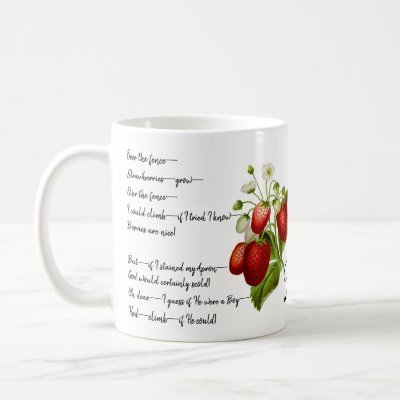
Emily Dickinson “Over the Fence” Strawberry Poem
This is Just to Say by Williams Carlos Williams (1883-1963)
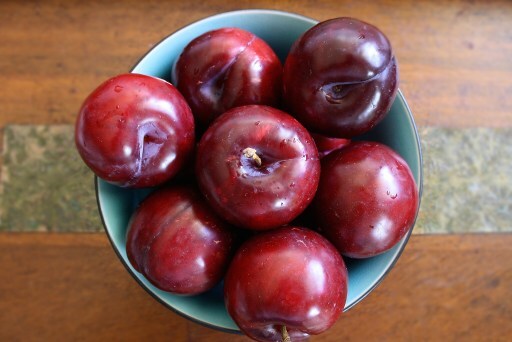
Almost anything can become poetry. Even a simple note on the fridge says how sorry you are for your lack of self-control regarding chilled, ripe fruit.
This Is Just To SayI have eaten
the plums
that were in
the icebox
and which
you were probably
saving
for breakfast
Forgive me
they were delicious
so sweet
and so cold
The simplicity of Williams’s This Is Just To Say is what makes it great. There were yummy plums, I was hungry, and now those yummy plums are gone. But the kicker isn’t that he’s eaten the fruit. It’s that he has to describe how amazing they tasted. As If eating them wasn’t enough, he had to rub it in that they were “delicious/ so sweet and so cold.” What a jerk.
Speaking of forbidden fruit. . .
Poem 251, or Over the Fence by Emily Dickinson (1830-1886)
Emily Dickinson is one of my favorite poets, so picking just one of her pieces is no easy task. However, if I’m including a women poet trapped in an uber-patriarchal society, I will have to go with something that contains a subversive voice.
251 Over the FenceOver the fence—
Strawberries—grow—
Over the fence—
I could climb—if I tried, I know—
Berries are nice!
But—if I stained my Apron—
God would certainly scold!
Oh, dear,—I guess if He were a Boy—
He’d—climb—if He could!
Over the Fence tells the short, sweet story of a woman who spys some sun-ripened strawberries on the other side of a fence. Since she’s a girl, climbing over the wall like a boy could eat the berries wouldn’t be right. Plus, if she were to stain her apron with berry juice, she’s be caught for sure. It’s easy to see that berries stand for sex or romance. The staining could be the sin of the act of love-making out of wedlock or, even more directly, the breaking of the hymen. Yet, we know the speaker has tried berries. Maybe not the ones over the fence, but she’s tasted berries and knows them to be good. Dickinson goes so far as to invoke God, saying that if he were a boy, he would climb the fence. Berries are that good.
Song of Myself from Leaves of Grass by Walt Whitman (1819-1892)
Like Whitman’s untamed beard, Leaves of Grass is a free-verse poetry marvel. Yet, Song of Myself is the real gem for me. Initially published in 1855 and then republished five more times (with additions and edits) during Whitman’s lifetime (George Lucas wasn’t the first creator to edit their work ad nauseam), Song of Myself is comprised of 52 individual parts and remained untitled until 1881.
Song of Myself11
Twenty-eight young men bathe by the shore,
Twenty-eight young men and all so friendly;
Twenty-eight years of womanly life and all so lonesome.
She owns the fine house by the rise of the bank,
She hides handsome and richly drest aft the blinds of the window.
Which of the young men does she like the best?
Ah the homeliest of them is beautiful to her.
Where are you off to, lady? for I see you,
You splash in the water there, yet stay stock still in your room.
Dancing and laughing along the beach came the twenty-ninth bather,
The rest did not see her, but she saw them and loved them.
The beards of the young men glisten’d with wet, it ran from their long hair,
Little streams pass all over their bodies.
An unseen hand also pass’d over their bodies,
It descended tremblingly from their temples and ribs.
The young men float on their backs, their white bellies bulge to the
sun, they do not ask who seizes fast to them,
They do not know who puffs and declines with pendant and bending arch,
They do not think whom they souse with spray.
I like to think that if Emily Dickinson were into finery instead of baking and lived by the sea, she would be the subject of Whitman’s poem. I see a reclusive Dickinson peeking through blinds to spy the bathers as they relax and play in the water. Perhaps they are Dickinson’s berries from Over the Fence. However, while Dickinson and Whitman were contemporaries, she was urged by family and friends to steer clear of the flamboyant Whitman with his unapologetic queer tendencies. Ironically, it is believed by more than a few scholars that Dickinson swam on occasion in the waters surrounding the Island of Lesbos. I like to think that she and Whitman might have been fast friends.
In section 11 of Song of Myself, we see an affluent woman bound by societal pressures to remain ladylike in her gilded cage. She can only enjoy the freedom of the male bathers from the seclusion of her house overlooking the beach. She would like to do more than watch, caressing them with her eyes, invisible hand touching them, but being a woman, she remains in her place, not naked in the water with the young man.

Walt Whitman Quote Song Of Myself Coffee Mug
Dulce et Decorum Est by Wilfred Owen (1893-1918)
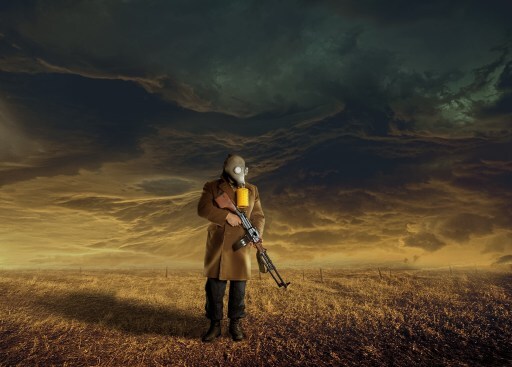
The complete works of Wilfred Owen consist of just over 20 poems. Hailed as one of the world’s greatest War poets, Owen lost his life at the ripe old age of 25 as he led his troops across the Sambre-Oise canal at Ors during the First World War. Yet, unlike other war poets of his generation, Owen didn’t glorify battle but lamented it with graphic depictions of what war did to individuals and countries.
Dulce et Decorum estBent double, like old beggars under sacks
Knock-kneed, coughing like hags, we cursed through sludge,
Till on the haunting flares we turned our backs,
And towards our distant rest began to trudge.
Men marched asleep. Many had lost their boots,
But limped on, blood-shod. All went lame, all blind;
Drunk with fatigue; deaf even to the hoots
Of gas-shells dropping softly behind.
Gas! GAS! Quick, boys!—An ecstasy of fumbling
Fitting the clumsy helmets just in time,|
But someone still was yelling out and stumbling
And floundering like a man in fire or lime.—
Dim through the misty panes and thick green light,
As under a green sea, I saw him drowning.
In all my dreams before my helpless sight
He plunges at me, guttering, choking, drowning.
If in some smothering dreams, you too could pace
Behind the wagon that we flung him in,
And watch the white eyes writhing in his face,
His hanging face, like a devil’s sick of sin,
If you could hear, at every jolt, the blood
Come gargling from the froth-corrupted lungs
Bitter as the cud
Of vile, incurable sores on innocent tongues,—
My friend, you would not tell with such high zest
To children ardent for some desperate glory,
The old Lie: Dulce et decorum est
Pro patria mori.
I first ran into this poem during our World History unit on WWI in high school. Only 15 at the time, it was still easy to see the brilliance of Owen’s prose. It saddened me then, as it does now, to think about the war he wrote so intimately and truthfully about the was that would take his life weeks later.
Used prevalently during the first world war, mustard gas is a blister agent that causes burning of the skin, eyes, lungs, and digestive tract. In high doses, it can cause the lungs to hemorrhage and the skin to become permanently scarred. With the creation of the Geneva Protocol, chemical and biological agents like mustard gas were banned from use during wartime engagements.
Dulce et decorum est pro patria mori: How sweet it is to die for one’s country. One can easily see the irony in the phrase Ownes uses to title and end his poem. Nothing about war is sweet.
You Fit Into Me by Margret Atwood (1939 – )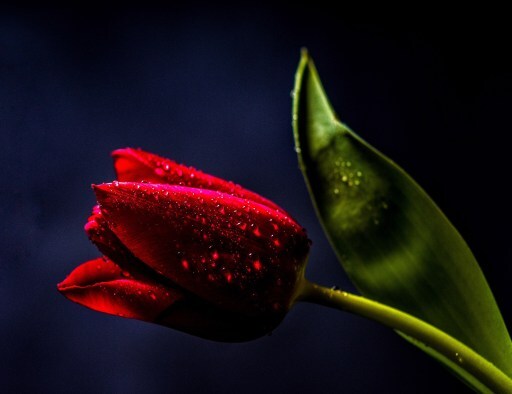
Margret Atwood is a powerhouse in the literary world and with good reason. She is the author of over 15 books of poetry, eight novels, five short fiction collections, and four non-fiction books and has a nice list of literary awards under her belt as well. Yet, for her long and fantastic bibliography, the poem that knocked my socks off consists of four simple lines.
You Fit Into MeYou fit into me
like a hook into an eye
a fish hook
an open eye
Like with any good piece of short writing, the author has placed a twist at the end, taking the reader off guard. What at first appears to be cliché and trite is transformed into something completely unexpected. We imagine the sewing notions, hooks, and eyes commonly found at the top of zippers in women’s dresses and the back of bras. These two pieces of hardware belong to one another. One is meaningless without the other. But then, through a brilliant twist of wordplay, Atwood transforms what we expect. The blunt hook is now a fishing hook, sharp and barbed, hard to remove from what it has pierced. The eye is no longer the intricately folded piece of metal awaiting its counterpart but the fragile organ we use to see. In four short lines, Atwood has managed to make us “aw,” with a sappy appreciation for love poetry, and then ripped the rug from under us to show that love isn’t forever. It sometimes isn’t even nice. It’s messy, cruel, painful, and can cause blindness. Man, I love this poem.
If you have a favorite poem or poet, you want to share. Please leave a comment below.
The post 5 Fantastic Poems You’ll Fall in Love With appeared first on Cynthia Varady.
March 27, 2023
The True Origins of Easter
The origins of Easter aren’t as cut and dry as I had initially thought. For decades I ran under the assumption that Easter derived its name from a Pagan fertility goddess, but that seems to be untrue. However, I soon discovered that Bede, the 8th-century history misled many by fabricating a few key points that have bred like rabbits ever since. So, what are the true origins of Easter?
The Origins of Easter? Portrait of Bede writing, from a 12th-century copy of his Life of St Cuthbert (British Library, Yates Thompson MS 26, f. 2r)
Portrait of Bede writing, from a 12th-century copy of his Life of St Cuthbert (British Library, Yates Thompson MS 26, f. 2r)Just because it’s in a book doesn’t mean it’s true. Most of the internet agrees that the origins of Easter begin with the Pagan (Germanic), Hebrew, and Christian cultures, but the ties to some of Easter’s most ingrained traditions might go back much further. According to Bede, Easter’s origins begin with old Teutonic (ancient Germanic folklore and mythology) mythology and derives its name from Eostre, the Anglo-Saxon goddess of spring, to whom the month of April was dedicated. He claimed ancient folks celebrated Eostre on the Vernal equinox when the day and night are equal in length.
However, no other source save Bede’s speaks on the subject of Eostre. There are no carvings of Eostre, no stories, and no connection to rabbits and eggs. It’s likely Bede concocted the goddess Eostre, fulfilling his desire for a tidy answer to the origins of the Easter question. So from where in the world does Easter and its iconic bunny come?
Teutonic Mythology and the Omission of EostreTeutonic Mythology is a four-book set by Jacob Grimm of the Brothers Grimm. Grimm draws on his vast knowledge of linguistic and comparative mythology to retell various Germanic mythology and folklore that play with the themes of time, creation, destiny, and the soul. Set up as an encyclopedia, each section examines specific topics and looks at the origins of German myths, their construction, and how they compare to other world myths concerning the same themes. Within its pages, Teutonic Mythology gives insight into ancient Germanic life and rituals, yet even Grimm couldn’t find any sign of Eostre and her bunny consort described by Bede. Perhaps, Bede pulled the goddess’s name from the old German, Osterhase, and ran with it.
Easter’s Ties to Passover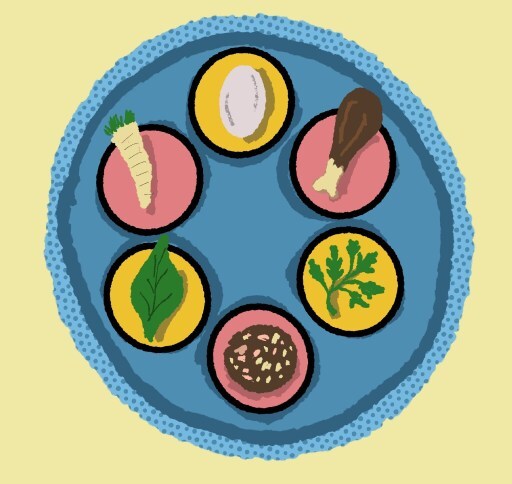 Seder plate via Pixabay
Seder plate via PixabayThrough symbolism, meaning, and its position on the calendar, Easter has become associated with the Jewish festival of Passover. The coinciding of Passover with Easter gives clues into Easter’s entering Christianity during its earliest Jewish period (1st century CE) (Gillian, 2019). Easter celebrates the resurrection of Jesus, while Passover celebrates the Israelites’ freedom from Egyptian slavery.
In 325 CE, the Council of Nicaea, led by Emperor Constantine, decided that Easter should occur on the first Sunday after the first full moon following the vernal equinox (not confusing at all). Due to this ruling, Easter has no fixed date but aligns itself with the full moon, coinciding with the start of Passover.
While Easter and Passover are distinctly different, they share a crucial element; the egg. During Passover, a seder plate contains bitter herbs, a roasted shank bone, salt water, matzah, karpas, charoset, maror, and a hard-boiled egg. The egg on the seder plate symbolizes the return of spring and the circle of life, which isn’t that far off from what the egg symbolizes for Easter.
So how do the Easter bunny and the egg come together?
Eyes Wide Open and the Origins of the Easter BunnyWhile the exact origins of the Easter bunny are unknown, theories abound. The source of Easter Bunny has isn’t roots in Germany. The word Easter Bunny originates from the German Osterhase, meaning Easter hare.
Back in the day, German farmers noticed that baby bunnies are born with their eyes open, meaning that they are fully developed, unlike other mammals with their eyes closed. Some ancient Anglo-Saxons took this orbital factoid to its next logical step: bunnies always kept one eye open, meaning they never slept. This notion gave birth to the connection between bunnies and eternal life, much like the egg (Anderson, 2017).
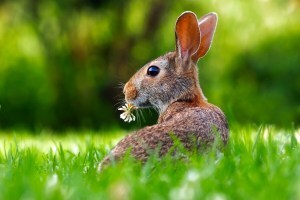 Egg Laying Rabbits?
Egg Laying Rabbits?Bede tells that one day Eostre healed a wounded bird by transforming it into a hare. Remaining part bird, the hare, laid eggs for the goddess to thank her for saving its life. But now we know Bede was a fiction writer, telling a story to fit the already well-established festival. So, how did the two symbols become intertwined?
Eggs and FarmingThe Thursday before Easter was the last fiscal day of the year during the Middle Ages. Farmers would settle their debts with their bursting supply of eggs, sometimes boiled, and hares. The connection between eggs and hares became cemented in the collective consciousness. By the 1600s, the idea Easter eggs were delivered via rabbit was the happening story (Anderson, 2017).
Eggs, Fertility, and Vinegar Dye
Ancient Persians, Greeks, Romans, and Egyptians celebrated the egg as a symbol of fertility and had a custom of coloring and eating eggs during their spring festival (Encyclopedia Britannic), which predates Christianity. Additionally, Early Germanic tribes decorated eggs. The earliest proof was discovered in a Romano-Germanic sarcophagus near Worms in Rhineland-Palatinate, which dates back to the 4th century (Anderson, 2017), where decorated eggs were left with the interned.
Yet, we can go back even further to 65,000 years ago in Diepkloof Rock Shelter in South Africa, where ancient hunter-gathers decorated eggs by scratching geometric designs into the shells (Ticiaverveer, 2016). To learn more about this history of egg decorating, visit Ticiaverveer, who has a fantastic write-up on the subject.
ConclusionThe Easter we know today took thousands of years to come about. Eggs, throughout many ancient cultures, were seen as a symbol of life eternal that was decorated and eaten for spring festivals around the world. Springtime is filled with new life, and baby rabbits are no exception. The mass abundance of eggs and rabbits and their symbolism of fertility, life, and rebirth melded perfectly, forming a lasting association.
The origins of Easter, while clouded in mystery, developed over the centuries. Yet, however odd an egg-laying bunny might be, unsettling even, it won’t stop us from overindulging in chocolates and deviled eggs one full moon after the Vernal equinox. Happy Easter and Passover, everyone.
ReferencesAnderson, Emma, (2017). Easter in Germany: The very Deutsch origins of the Easter Bunny. The Local. https://www.thelocal.de/20170410/made-in-germany-the-very-deutsch-origins-of-the-easter-bunny
Ticiaverveer, (2016). he World’s Oldest Decorated Eggs. https://ticiaverveer.wordpress.com/2016/03/21/the-worlds-oldest-decorated-eggs/
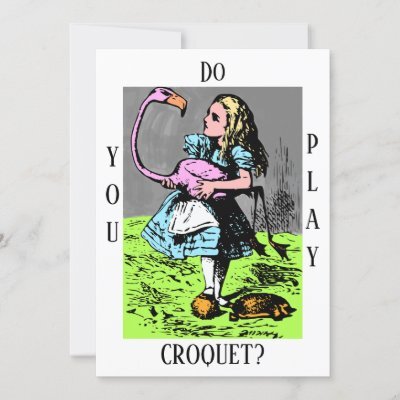
Alice in Wonderland “Do you play croquet?” Invite
The post The True Origins of Easter appeared first on Cynthia Varady.



